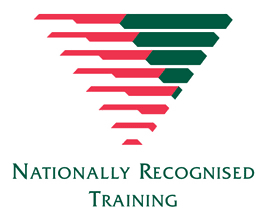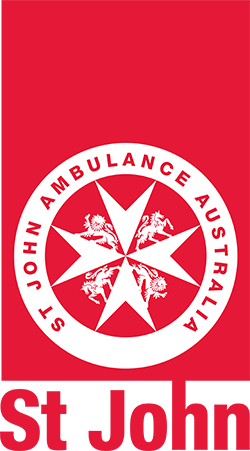Course Overview
This qualification starts you on the pathway for a role as an Ambulance Transport Attendant, providing non-emergency transport and care for patients who have a low or medium acuity or chronic illness or disability and require transportation. You will gain the skills to provide clinical assessment and pre-hospital interventions to patients in need, including providing advanced skills in life support.
This fee-for-service program is not eligible for government funding.
Who's It For?
The Diploma of Emergency Healthcare is for individuals who have already completed a Certificate III in Non-Emergency Patient Transport and are seeking to advance their career in the Patient Transport industry. This course is suited for:
- Aspiring Ambulance Transport Attendants: Those who want to pursue a career in emergency healthcare, providing care and transport to medium acuity patients.
- Pathway To Paramedicine: Those who want grow their career with a pathway into the Bachelor of Paramedicine.
Campus Locations
Job Outcomes
Potential career outcomes could include:
-
Patient Transport Attendant
What You'll Learn
- Patient Assessment and Care: Learn how to assess and monitor the condition of medium acuity patients.
- Safe Transport Practices: Develop the ability to safely transfer and transport patients using stretchers and wheelchairs.
- Patient Assessment: Learn how to perform assessments of patients experiencing trauma or medical emergencies, including monitoring vital signs and identifying critical conditions.
- Emergency Medical Procedures: Gain the skills to perform life-saving procedures, such as airway management and defibrillation.
- Trauma and Injury Management: Understand how to manage patients suffering from injuries, including fractures, burns, and head trauma.
- Teamwork and Communication: Enhance your ability to work effectively with emergency healthcare teams, communicate clearly with patients and bystanders, and provide critical handovers to other medical professionals.
Recognition

Study Method
- BlendedBlended delivery - both online course content and partial face to face requirements
- In-classIn class delivery - predominately face to face course content conducted at a specific location
- OnlineOnline delivery - online course content with the exception of assessments and work placement
- VirtualVirtual Delivery - Live and interactive classroom-style learning conducted completely online
Locations


- Victoria
- Melbourne
Duration Study Load
Diploma for Students who hold HLT31120/HLT41120: five units* consisting of 17 workshops of face-to-face training and 160 hours of placement.
During weeks with classes, these run 8.30 am-5 pm one day per week.
You are expected to complete self-guided learning.
Students are given 12 months from the course commencement date to complete the course.
Delivery
- Delivery is a combination of face-to-face classes, plus observation shifts where you will be on a work placement and simulated training
Entry Requirements
Additional Requirements
To commence in this course, you are required to have:
- • Full driver’s license or green P plates (Red P and L plates not accepted)
- Current working with children check
- Current Police check
- Students must have a laptop or tablet which is wi-fi enabled
- Proof of vaccinations for current Influenza (within the last 12 months), COVID 19, Hepatitis B, Varicella, Pertussis, Measles/Mumps/Rubella, with serology report (required before commencing observer shifts)
Recognition Of Prior Learning
The Diploma of Emergency Healthcare offers pathways for Recognition of Prior Learning (RPL) and Credit Transfer, allowing you to fast-track your qualification based on your previous experience and education.
Recognition of Prior Learning (RPL)
If you have prior work experience or have developed skills relevant to patient transport or healthcare, you may be eligible for RPL. This process assesses your existing knowledge and skills against the qualification requirements, reducing the time and study needed to complete the course.
Credit Transfer
If you have previously completed formal qualifications or units of competency that are relevant to this course, you may be eligible for credit transfer. This allows you to receive credit for units you’ve already completed, eliminating the need to repeat learning.
Assessment
- A successful outcome for this diploma will be determined by a range of different assessment methods including written assessment, observation of simulated and practical activities etc. You will be required to demonstrate CPR on a manikin on the floor
- Participants will also be required to undertake a wide range of manual handling tasks in preparation for future employment
- All the Assessment Task Workbooks will be provided by your trainer in Microsoft Word or PDF. You will need to complete your answers in the workbook and email them to your trainer. Your trainer will provide you with feedback in your workbook. In the Assessment Task Workbook, each assessment task provides explicit instructions on how to complete the task
Additional Requirement
As an Ambulance Transport Attendant, you can expect your day to day work to include:
- Transporting patients to and from medical appointments
- Responding to emergency calls that have been deemed non-time-critical
- Taking a leadership role within the team to ensure high standards of patient care and safety
- Comforting patients and their families by offering support and encouragement; being punctual and attentive to procedure schedules; demonstrating caring and cultural sensitivity
- Maintaining a safe, secure, and healthy work environment by following standards and procedures; complying with federal and state legal regulations and Joint Commission on Accreditation of Healthcare Organizations (JCAHO) requirements
- Updating your job knowledge by participating in educational opportunities
- Enhancing the reputation of the organisation by accepting ownership for accomplishing new and different requests; exploring opportunities to add value to job accomplishments
Subjects
About St John Ambulance Australia (VIC) Inc
As one of the largest training providers training over 400,000 students nationally per year, St John is also a not-for-profit, operating for over 141 years. Our mission is the service of humanity, and we aim to deliver the best student experience possible and be a place where people are inspired to learn, volunteer and work. We support our charitable work through a strong and diversified commercial operation, which includes Training, Event health services, Non-emergency patient transport and the sale of First Aid products.
St John Ambulance (VIC) delivers nationally recognised training and assessment on behalf of St John Ambulance Australia (RTO 88041)



